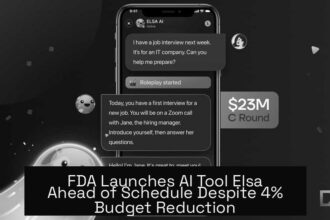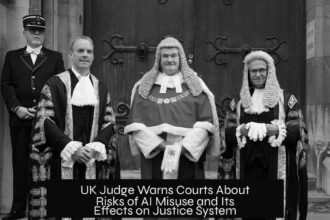Table of Contents
ToggleDead Sea Scrolls Older Than Previously Thought, Says AI
Recent AI analysis suggests the Dead Sea Scrolls may be older than earlier estimates indicated. This new insight could alter how scholars interpret the history of Judaism and early Christianity. The study combines artificial intelligence with radiocarbon dating and handwriting analysis to provide a refined timeline.
AI’s New Role in Dating Ancient Manuscripts
Researchers have trained an AI system to study handwriting styles in ancient manuscripts, including the Dead Sea Scrolls. According to a study published in PLOS ONE, this AI suggests many scrolls date back earlier than previously believed. It marks a shift in antiquity research by using AI to interpret fragmented, delicate texts more accurately.
- AI analyzes handwriting styles to identify chronological markers.
- It cross-references handwriting data with radiocarbon dating results.
- The method reduces subjective judgments common in traditional paleography.
Combining AI, Radiocarbon Dating, and Paleography
Traditional paleography relies heavily on experts’ subjective assessments, often leading to dating uncertainties. The novel approach integrates AI with radiocarbon measurements. Radiocarbon dating estimates manuscript age by measuring carbon-14 decay. The AI assesses handwriting features, creating a more objective dating method.
The AI model was trained using 24 manuscripts with confirmed radiocarbon dates. Then, it analyzed handwriting from 135 scrolls with previously unknown dates, covering roughly 300 years from 200 BCE to 100 CE. This produced a 79% accuracy rate in dating estimates.
Redating the Scrolls: Key Findings
The AI analysis indicates the Dead Sea Scrolls may originate earlier than thought, especially from the early second century BCE or older in some cases. This challenges prior assumptions placing many texts closer to the mid-second century BCE and later.
This suggests scribal activity and literary culture existed before the rise of the Hasmonaean kingdom, typically credited with promoting literacy and intellectual traditions. The findings imply that scribes transcribed multiple literary manuscripts and were active well before previously accepted dates.
Implications for Historical Understanding
- A possible revision of the Dead Sea Scrolls’ chronology may reshape knowledge of ancient Judea’s social and religious history.
- The findings challenge the timeline of literacy and intellectual culture in the region before 150 BCE.
- The study highlights the enhanced collaboration between AI tools and human expertise in historical research.
The researchers noted that computational tools do not replace scholars but rather extend their capability to uncover new information from even well-studied texts.
The Dead Sea Scrolls: Historical Significance and Dating Challenges
Discovered in 1947 in Israel, the Dead Sea Scrolls consist of about 1,000 manuscripts. These include some of the oldest known copies of Hebrew Bible texts. Their study has deeply influenced understanding of early Judaism and the origins of Christianity.
Dating the scrolls has traditionally relied on paleography, but skills in differentiating handwriting styles vary widely. The scrolls date roughly from 250 BCE to 100 CE, but scholars have found it difficult to pinpoint dates accurately due to overlapping handwriting styles and manuscript conditions.
By combining AI with radiocarbon analysis, this research aims to overcome those issues and provide a clearer historical timeline.
Summary of Key Points
- AI-assisted handwriting analysis suggests some Dead Sea Scrolls predate previous estimates.
- The new method improves dating accuracy by combining AI, radiocarbon dating, and paleography.
- Scribes likely copied manuscripts earlier than the rise of the Hasmonaean kingdom.
- Findings could adjust understandings of literacy and cultural development in ancient Judea.
- Enhanced collaboration between technology and human expertise promises new avenues for antiquity studies.
Dead Sea Scrolls Older Than Previously Thought Says AI: A Game-Changer in Ancient History
AI reveals some of the Dead Sea Scrolls may be older than scholars first believed. This fresh insight could shift how we view the origins of Judaism and early Christianity. Imagine rewriting a part of ancient history thanks to the sharp eyes of artificial intelligence.
The Dead Sea Scrolls, discovered in 1947 in a cave in Israel, remain one of the most significant manuscript finds of the last century. These roughly 1,000 manuscripts include some of the oldest Hebrew Bible texts. Traditionally, scholars have dated them via paleography—the study of ancient handwriting—placing them between 250 B.C.E. and 100 C.E.
But here’s where it gets interesting: this new AI research suggests those dates might be off.
How AI Cracks the Code of Ancient Scrolls
Researchers combined three powerful tools—AI, radiocarbon dating, and handwriting analysis—to revisit the age of these ancient texts. Radiocarbon dating measures the decay of carbon-14 isotopes, providing an estimated age for material. Handwriting analysis (paleography) adds a layer of style examination to identify changes over time.
Yet, paleography has always had a pesky issue: subjectivity. Different experts might arrive at different conclusions by looking at the same handwriting. Enter AI to bring quantified objectivity.
Here’s how it worked:
- An AI model first trained on 24 manuscripts with reliably dated radiocarbon samples.
- It then analyzed handwriting style from 135 scrolls of unknown age spanning about three centuries—from 200 B.C.E. to 100 C.E.
- The model combined this data to produce age estimates with about 79% accuracy, a serious leap forward.
The AI does not replace scholars. Instead, it strengthens their toolkit, providing new pathways for discovery even when dealing with some of history’s most well-studied documents.
Rewriting the Timeline: Just How Old Are These Scrolls?
The AI study found that many Dead Sea Scroll manuscripts date earlier than previously thought. Several texts appear to hail from the early second century B.C.E., possibly even a bit earlier. That’s a big deal.
Why? Because it challenges the widely held assumption that the expansion of the Hasmonaean kingdom from the mid-second century B.C.E. spurred scribal and literary culture. Instead, the AI suggests scribes were busy copying multiple literary manuscripts before this political and cultural boom.
In simple terms, people were more literate and engaged in intellectual culture earlier than we gave them credit for. Fascinating, right?
What Does This Mean for Our Understanding of Ancient Judaism and Early Christianity?
Some manuscripts among the Dead Sea Scrolls represent the oldest surviving copies of Hebrew Bible texts. If these scrolls go back further than the 2nd century B.C.E., scholars might need to rethink parts of Jewish textual history.
Moreover, since early Christianity arose from the same cultural and religious soil, adjusting the timeline might also reshape scholarly narratives about early Christian origins. This is exciting news for historians, theologians, and curious minds alike.
The Bigger Picture: How Technology Is Shaping History
This study is a perfect example of how emerging technology helps push the frontiers of humanities research. By pairing AI with radiocarbon dating and expert knowledge, researchers achieve more reliable results, shrinking the guesswork involved in studying ancient texts.
It’s also a reminder that human expertise remains crucial. AI doesn’t toss out scholars; it amplifies their insights, unfolding fresh discoveries from even the most ancient and fragile manuscripts.
Wondering How This Could Affect Future Discoveries?
Imagine what other historical artifacts waiting in dusty archives or forgotten caves might reveal under AI’s watchful eye. This AI approach may inspire new models for dating and analyzing manuscripts worldwide — from Egyptian papyri to medieval European texts.
For those passionate about history, theology, or archaeology, this development offers a chance to revisit old findings with fresh curiosity and state-of-the-art tools. Plus, it’s a solid reminder that history always has surprises up its sleeve.
Summary Table: AI Meets Ancient Scrolls
| Aspect | Traditional Method | AI-Enhanced Method | Impact |
|---|---|---|---|
| Dating Technique | Paleography (subjective handwriting style analysis) | AI trained on radiocarbon-dated handwriting with 79% accuracy | More objective and accurate age estimates |
| Date Range | 250 B.C.E. to 100 C.E. | Earlier dates, possibly early 2nd century B.C.E. or before | Revised chronology of scrolls and texts |
| Cultural Understanding | Literacy rise linked to Hasmonaean kingdom mid-2nd century B.C.E. | Evidence of scribal culture predating Hasmonaean expansion | New view on intellectual history in ancient Judea |
Final Thoughts: AI Unlocks Secrets, But We Keep the Keys
The Dead Sea Scrolls’ story is far from closed. AI has breathed new life into their study, challenging assumptions and deepening our grasp of ancient history. It highlights how technology and human scholarship can partner beautifully to unearth secrets locked away for millennia.
Feeling inspired to dive into ancient texts or follow the digital archaeology trend? Keep an eye on how AI will continue to rewrite chapters of history. And next time you hear someone dismiss AI as “just tech,” remind them it’s also a detective for the past!
What new technique was used to reassess the age of the Dead Sea Scrolls?
Researchers combined AI analysis of handwriting with radiocarbon dating. This method created a more objective and accurate way to estimate the scrolls’ age.
How does AI improve the dating of the Dead Sea Scrolls compared to traditional methods?
AI reduces subjectivity by quantifying handwriting styles and cross-referencing with carbon dating. This approach increased dating accuracy to about 79%, better than previous subjective paleography.
What did the AI findings suggest about the age of the Dead Sea Scrolls?
The study indicates that many scrolls are older than previously thought, possibly dating back to the early second century B.C.E., earlier than former estimates suggested.
How might redating the Dead Sea Scrolls affect our understanding of ancient Judaism and Christianity?
Older dates imply scribal culture and manuscript copying existed before the Hasmonean rise, reshaping timelines of religious and intellectual history in Judea.
Does using AI reduce the importance of human experts in studying ancient texts?
No. The AI tools complement human expertise, providing new insights while still relying on scholars for context and interpretation.





